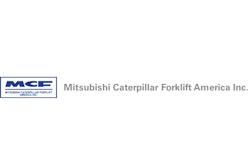
Lift trucks are the workhorses of a DC. They’re expected to withstand a wide range of temperatures, occasional operator abuse and a round-the-clock schedule in some cases. Keeping these mechanical beasts running smoothly directly contributes to the DC’s productivity level.
Whether lift truck maintenance is done in-house or contracted out to the OEM or a third party, sticking to the lift truck maintenance schedule can go a long way in keeping your fleet in tip-top shape.
All lift truck manufacturers provide their vehicles with a preventive maintenance schedule, or PM. It is imperative to track the number of hours the vehicle is used and commit to taking it out of service for maintenance when it reaches the prescribed hours.
Lou Micheletto, manager of warehouse product strategy, NACCO Materials Handling Group Inc. (NMHG), Greenville, NC, says companies that adhere to the schedule will benefit by preventing a cascade of failures which can occur when maintenance issues go unseen for long periods of time.
“It’s easy to think ‘this lift truck is operating fine, so why take it out of service and absorb the cost?’ But it’s called preventive maintenance because it’s exactly that. We’re looking for things that may subsequently damage the vehicle thereby taking it out of service for much longer than a regularly scheduled PM would. Ultimately, you’re avoiding a panic situation of failure at an inopportune time.”
Bruce Marti, national manager parts, service and aftermarket, of Toyota Material Handling USA Inc. in Irvine, CA, stresses the importance of conducting maintenance on a regular basis.
“We use the term periodic maintenance because over the years we’ve determined that maintenance doesn’t rule out failures,” says Marti. “We call it periodic because the objective is to get on a regular interval maintenance schedule. We simply avoid using ‘preventive maintenance’ because at some point, you still have to do maintenance.”
Examples of periodic maintenance include checking fluids and lubricants, chains, electrical connections, tire wear and battery health (see more on maintenance issues on page 59).
According to major lift truck manufacturers, PM schedules vary based on the application. One variable is the environment the truck is expected to operate in.
Freezer Considerations
Frozen storage warehouses can reach temperatures as low as -40 C. The most significant challenge lift trucks face when migrating from freezing to ambient-temperature zones is condensation. Any time water may encounter electrical components there is potential for problems, so special design considerations must be made for subzero applications.
“In the wire harnesses we have connectors that are sealed to IP64 level, as well as seals around the individual connectors,” says Ken Schreiber, director, class II products, NMHG. “And on the control boards we have seals and coatings so condensation won’t affect the internal components.”
Cara Donna Provisions Co., located in Braintree, MA, is a broad line foodservice distributor servicing the New England area. Jim Wilcox, operations manager of Cara Donna, manages a fleet of New Bremen, OH-based Crown lift trucks at its 52,000-square-foot facility. Each truck is equipped with a special freezer package to ward off the maintenance challenges associated with freezing conditions.
“Our Crown lift trucks come with condensation heaters on the switches and a different kind of wiring that’s thinner and more pliable,” Wilcox says. “We also use special tires that disperse any moisture that might get onto the equipment.”
Condensation near the tires can lead to a slippery situation that may result in the lift truck needing to be repaired, Toyota’s Marti explains. “When operating lift trucks on a slippery surface, you need to make smart decisions about your tires. A softer compound allows the tire to grip the surface more easily than a rigid tire compound. A key aspect of maintenance is paying attention to what type of equipment is suited to the application and replacing the equipment when it is time.”
Batteries are particularly vulnerable in freezing environment. Materials Transportation Co. (MTC), Temple, TX, is a battery changing equipment company. Using software such as MTC’s EBatt helps maintenance supervisors conduct battery maintenance on time.
“The software tracks the productivity of the lift truck and the performance of the batteries,” explains Terry Orf, administrative vice president, MTC. “It tracks which batteries are underperforming and indicates when to wash and water them. The EBatt clearly displays onscreen which battery maintenance activities need to be done.”
Perry Ardito, general manager of Jungheinrich warehouse products for Mitsubishi Caterpillar Forklift America Inc. (MCFA), based in Houston, recommends using a lightweight oil once you reach temperatures of -10 F.
“The oil we recommend is similar to what aircraft use because of their requirement to fly in high altitudes and at extreme temperatures,” says Ardito.
In applications where lift trucks move from frozen to ambient temperatures frequently, a blend of regular and lightweight oils may be ideal.
“I use a 50/50 mix because our lift trucks aren’t dedicated solely to the freezer,” says Cara Donna’s Wilcox. “But if you had equipment dedicated exclusively to frozen, I would use an 80/20 mix of low-temp oil and regular or standard hydraulic oil. You want the viscosity to be a little lower in cold environments.”
Design Enhancements
Many lift truck manufacturers are helping their customers by taking into account maintenance early on in the design phase.
For example, Jungheinrich sprays a primer on all its trucks designed for cold storage environments that provides additional protection against corrosion by repelling moisture.
Yale also makes use of its finish as a maintenance enhancer. “We recognize that no matter how well you divert water, some collection still may occur,” says Micheletto. “So we examined how paint can minimize the affects of water. With paint on both the outside and the inside, you minimize rust from both sides.”
In addition to PM schedules, operator error and usage habits can dictate how often a lift truck requires maintenance. Keeping operators comfortable while on the job can reduce accidents and the potential for needing repair. That’s why many new lift trucks are designed with heated cabs for cold storage applications.
“Typically in a freezer warehouse the operator will work for 20 minutes, come out to warm up for 20 minutes, then go back in for 20 minutes,” says Ardito. “That type of schedule is abusive to the equipment. But when a lift truck is equipped with comfortable features like heated seats and heated windshields, the operator will continue working regardless of the temperature. Ultimately, the longer they can stay in the frozen environment, the less opportunity there is for condensation to form, thus minimizing the damaging affects of water.”
The technician’s access to critical maintenance areas is also important from a design standpoint. Engineers at Yale positioned the inspection or adjustment points in easy-to-find locations, so there is a greater probability the technician will make the adjustment.
Keeping lift trucks well maintained leads to reduced downtime by mitigating the potential for breakdown during a peak operating cycle. New lift truck features such as water repellent seals and paints, heated cabs and smart placement of internal components help make the maintenance aspect of fleet management easier than ever.
Maintenance AT-A-GLANCE
By Joe Ginnetti
Regardless of the environment or application, following these six maintenance tips can ensure your lift truck fleet will achieve optimal performance:
1. Lubrication: Properly lubricate all of the wearable components, such as bushings and bearings. This helps ensure the components achieve their targeted threshold of working service life.
2. Fluid levels: Low fluid levels can impact the performance of components, cause premature parts or seal failure due to heat and may slow operations.
3. Loose connections: Physically inspect all connections, such as electrical, hydraulic and mechanical. Tightening these connections can help keep the truck running smoothly.
4. Battery care: Improper care can shorten battery life and, in some cases, lead to a failure to meet warranty requirements.
5. Chains and castor adjustments: Lift chains stretch during normal use and castor assemblies are critical to ride stability. Proper lift chain adjustment may prevent fork replacements and mast repairs. Poorly adjusted castors can cause premature load wheel wear.
6. Loose hardware: Lift truck bolts should be regularly checked and tightened as necessary.
—Ginnetti is vice president of sales for
The Raymond Corp., Greene, NY.
















